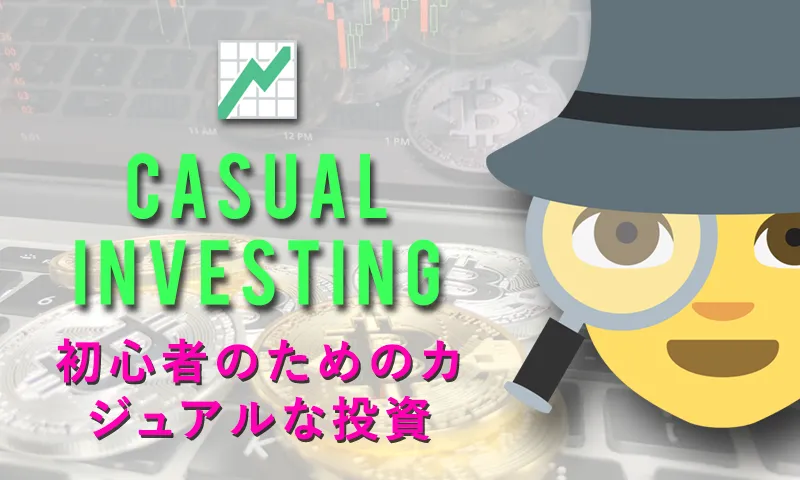
Firstly, let me preface with a disclaimer: I'm not an expert in finance and economics. I've never invested in any company stocks and precious metals before. They aren't all that appealing to me anyway. So, much of what I know is just from my own experience dealing with cryptocurrency markets and reading books like The Black Swan and Antifragile: Things That Gain From Disorder by Nassim Nicholas Taleb. Maybe including Fight Club by Chuck Palahniuk as well.
While some of us have shorter time horizons when it comes to investing, I have a preference for investing in fundamentals that seem to be evergreen. That is, investing in sustainable organisations that can go on for a very long time. Cryptocurrencies are a good representation of such organisations. As long as they're open-sourced and sufficiently decentralized, these projects will be worked on for the long-term. But I have one extra criteria for evergreen coins, which I'll spell out in the conclusion.
As usual, only use your disposable income when it comes to investing in cryptocurrencies. You would need to be able to hold onto your position for any substantial returns over the long-run.
Truth is, it's most likely you wouldn't need this guide at all as it's easy to randomly pick some low-medium cap coins and gain from them in this bullish market. Plus, these coins have some dimensions that give rise to a certain floor for store-of-value with a large enough community. But I'm just writing this for anyone who's even remotely interested in taking a dive in being a casual investor in cryptocurrencies.
Important metrics to consider

It's better to look at market capitalization than the price of the coin alone as it's a loose indication of network value, just as much as how people talk about Facebook being worth $500 billion as a company. Just tune into https://coinmarketcap.com and notice this figure in the charts. Also another metric worth considering is the total supply of the coin and its inflation structure, if any. Look for the latest whitepaper for any of the coins.
Starting with the network's 16th hard fork in December 2016, Steem began creating new tokens at a yearly inflation rate of 9.5%. The inflation rate decreases at a rate of 0.01% every 250,000 blocks, or about 0.5% per year. The inflation will continue decreasing at this pace until the overall inflation rate reaches 0.95%.
This will take about 20.5 years from the time hard fork 16 went into effect. 75% of the new tokens that are generated go to fund the reward pool, which is split between authors and curators. 15% of the new tokens are awarded to holders of SP. The remaining 10% pays for the witnesses to power the blockchain.
As an example, this is the supply inflation rate for Steem (check the whitepaper) that starts at 9.5% in the first year. This inflation rate decreases over time by 0.5% per year, in similar vein with Bitcoin's decreasing inflation rate of 50% every 4 years. However, Steem will have a soft-cap of 0.95% inflation rate after 20 years while Bitcoin's inflation rate will be at 0% in year 2140. With mass adoption, the 0.95% inflation rate can account for lost and inaccessible funds that will eventually happen over a long period of time.
Justifying an entry point
Let's assume that cryptocurrency markets are going to be a multi-trillion dollar market sometime in the future. Let's say $10,000,000,000,000. With that amount, we are able to house about 1,000 organisations with an average network value (or market cap) of $10 billion dollars. Due to Zipf's Law, let's stretch that out into a conservative $1 billion dollar per cryptocurrency (note that I would sometimes use the word organisation or community).

So depending on your risk-appetite, just choose your entry point into any cryptocurrencies before they hit a market cap of $1 billion dollars. My preferred sweet spot for least risk in investing is when a coin's market cap is around $50 - $200 million to accumulate most of my desired position. But generally, under $1 billion is fine for any coins that could enter mainstream use.
Invest in which coin?
There's no straight answer to this as we all see the world in different ways. You'll have your own taste in coins, and I believe there'll be different flavours in the market for everyone, even for the same kind of coins. Different strokes for different folks. Which is also why we have thousands of different brands for everything in our consumer culture. But here's what I think is important to inspect before deciding your investment position: decentralization, usability, productivity, resonance, and market activity.
Decentralization. Are there plenty of people holding the coins, and how concentrated is the wealth? Is it easy for anyone to game or hack the distributed ledger? This should adjust your risk appetite. Generally, the more decentralized, the better. Some have argued that Proof-of-Work works toward better decentralization. For me, sufficient decentralization present in consensus algorithms like Delegated Proof-of-Stake is good enough. Plus, some might say it's better. This will be up to your own judgement, of course. Also, note about the potential speed of distribution / decentralization. You can do some due diligence here through block explorers. As for the case of OmiseGO, an ERC-20 token, check this out and scroll to the bottom of the page to see the distribution. You should be able to check this kind of stats out in most cryptocurrencies.
Usability. This is the most important element for me. Is there something people can use now? Do or will people use it frequently? Is it easy to build something on it? If you find yourself using it frequently, all the better. This is why I have a heavier position in Steem Power. It's the only coin I use 99% of the time when it comes to cryptocurrencies. If its slow and imposes heavy transaction fees, I would also deem it unusable over a long-run. This quality of usability is very important, in my opinion, as it is the very foundation of network effects. People need to adopt and use it in their everyday life.
Productivity. Most cryptocurrencies incentivize human behaviour, and subsequently, activities. What's the coin all about and what does it create? If it encourages productivity and has a positive net effect, then it's most likely a good thing because it creates value.
Resonance. If you feel strongly for the coin, be it for a cause or whatever, perhaps it's something that you should invest in. There's a good chance many might feel the same too. The best kind of investment is when you can contribute both material and human capital. For example, I'm all for a zero-marginal cost society in the future, so I've a preference for coins with zero transaction fees. Hence why I'm using this platform as well. For this criteria, please make sure you do more due diligence if you're emotionally attracted to any projects out there. It could all just be fluffy marketing stuff with no substance.
Trading volume and liquidity. It will depend on your risk appetite. Higher volume is better, obviously. I think there needs to be enough trading volume to justify an investment. It's a sign of attention, market activity, etc. Also, you would need to be able to liquidate your position into your desired currency without too much of a friction.
There's also a question of core developers / community. This is important when the network value is under $1 billion, especially when it's much lower in the region under $50 million. However, this criteria should become less important as it grows and becomes more decentralized. I'm not including this in my list as it's not all that important to me. As long as a project is open-sourced with decent distribution, people will most likely get things done with enough capital. I take a look at people only when a project is closed-sourced and / or heavily centralized in the beginning.

Sorry for the wall of text. Here's an image.
HODL, but forever?
I'm from the camp that thinks this way: leaders won't last more than 10 years in this age of accelerated disruption. Not even the cryptocurrencies that we all know and love. This is why I've personally moved on away from some of the older giants, only keeping some of them just in case. The HODL memes that go around are funny and all, but you know what, even happy long-living turkeys get slaughtered when its turn comes during Thanksgiving. So, diversify.
To conclude, here's my last note on long-term investing. In my opinion, zero transaction fee is an absolute requirement for evergreen projects. It saves money, improves adoption, and allows for plenty of innovation. Network revenue generated from transactions with arbitrary fee isn't a great plus point in my books.
Please invest responsibly and only put in what you can afford to lose. Also remember to secure your coins for the long run. Don't leave them in exchanges. Store them in the appropriate wallets and be the one that owns the private keys!
Oh, and remember to take profit at some point to cover your original investment. By the way, the coolest and most casual form of investing I found.. is voting on the Steem network! Power it up for peace and prosperity.
All the best in your adventures!